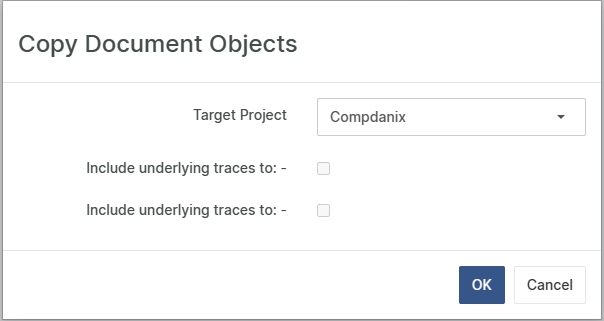Copy Document Objects between Projects
This function is an internally combined operation of the export and import function.
The copied data includes:
General Document Object data such as type, ID, revision, chapter, and title
Attribute data
Chapter data
Incoming and outgoing traces
How to Copy Document Objects to another project
Click Copy Objects to Project and select the objects to include in the copy operation.
To include Document Objects from other Document Object types, click Select more... and expand the selection.
Click OK to proceed to the next step. In the displayed dialog, select the Target Project and click OK.
It is here possible to include underlying traces for risk types, similar to the Export Objects function.

In the next dialog, select the options for the import step.
Click OK to execute and complete the copy.
